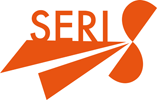Traveling could be listed as one of humanity’s most cherished activities. Nonetheless, 1.3 billion international arrivals Ankünfte (2017) leave their mark – economically, but also socially and ecologically. The UN declared 2017 the “International Year of Sustainable Tourism for Development” to point out the positive and negative effects of tourism.
The “Forum Zukunft Tourismus 2018” (“Forum Future Tourism 2018″) at the Impact Hub Vienna wanted to ask “What remains of the International Year of Sustainable Tourism for Development?“ with the inputs of experts and discuss the the efficacy of IY2017 and the opportunities of social entrepreneurship for a change in tourism.
Head of SERI Fritz Hinterberger was asked to speak about”Future Scenarios of Sustainability” and subsequently published conference proceedings in cooperation with the in Zusammenarbeit with the “Club Tourismus”
The first part of the volume includes a section titled „Nachhaltigkeit im Tourismus – Ein Theoretischer Rahmen“ (“Sustainability in Tourism - A Theoretical Framework”) which deals with our scenarios for sustainability.
“Ecosystems all around the world are under substantial stress from human activity, a reduction in our use of energy and resources unavoidable. Climate change is real and our economies are growing slowly. It’s decisive how Europe faces these challenges: head on or just reactively. What could a good, a sustainable development look like? As part of the European POLFREE project, four concrete sustainability objectives for 2050 were developed. They deal with the use of resources, water and land as well as the emission of CO2. betreffen den Verbrauch von Ressourcen, Wasser und Fläche sowie den CO2-Ausstoß.
The central message of POLFREE: Using fewer resources and serious action against climate change can lead to more jobs, positive economic development as well as a high quality of life and make room for social justice. Proactive policies can make economic and social innovation possible both in production and consumption.”
The results of the scenarios are described briefly and the effects on tourism and (air) transport in Austria illustrated trough visual representations of the indicators employment and production value.
The complete conference proceedings (German) are available through Club Tourismus

